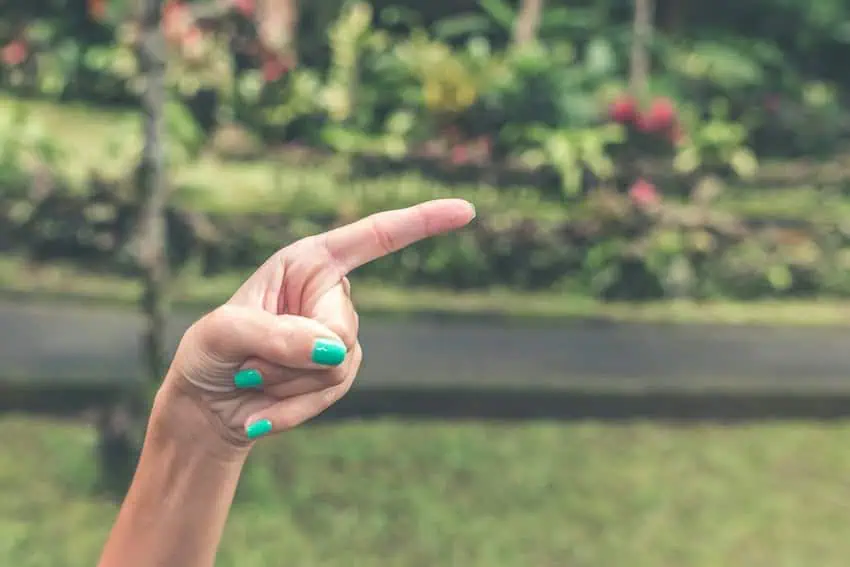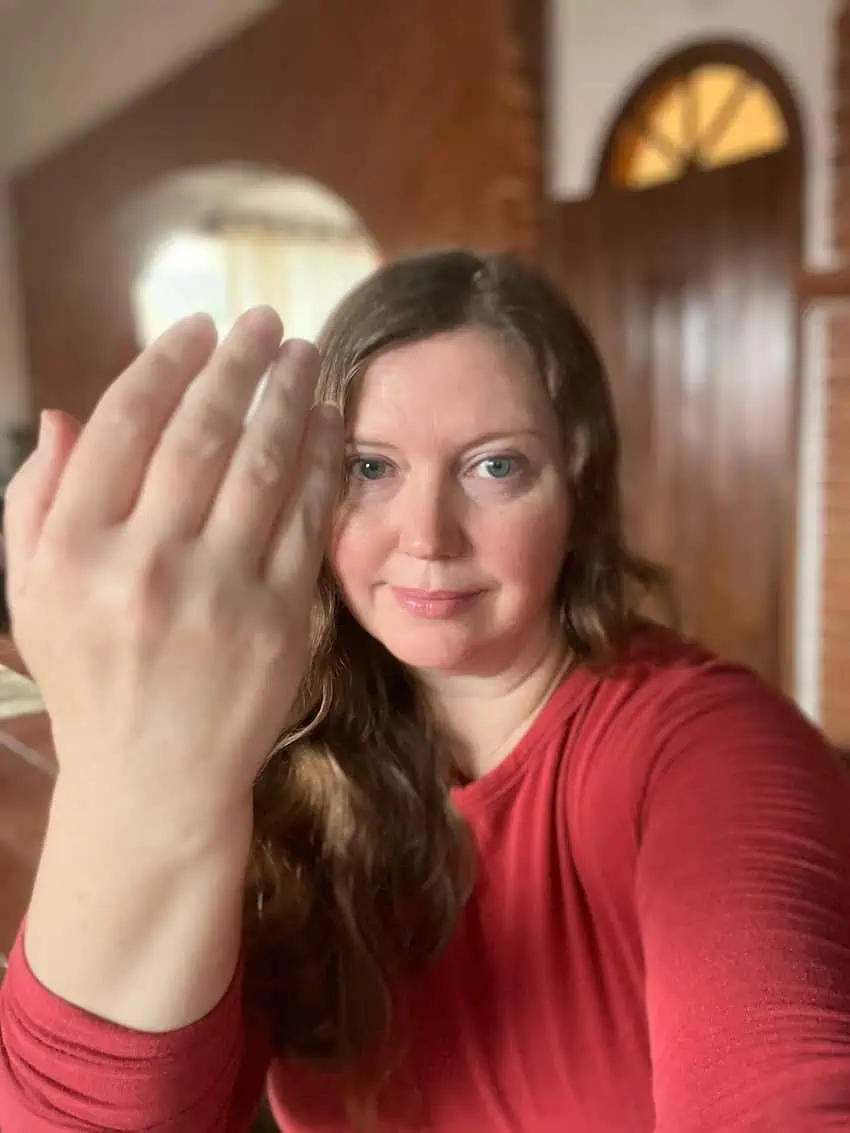Ever had someone in Mexico give you the stink eye and you didn’t know why?
Were you pointing in a really obvious way?

Hand signals and gestures are one of those things that take a while to learn. I’d throw graphic symbols into this category, too. My first year here, for example, I just did not understand the political billboards. They seemed to be saying “Vote Green Party,” but then they’d have a giant “X” over the Green Party candidate’s name.
“So… do you want us to vote for them or not?” Crossing their names out felt like defacing their pictures. “Support them, but don’t vote for them?”
It turns out that an “X” is how you make a selection on ballots. “Oooooh, okay! Well that makes more sense then, I guess.”
But back to the pointing. Did you know it’s rude here? “What am I supposed to do besides point?” you may ask. My friend, I do not know. Describe it, I guess. Or describe them, especially if it’s a “them.” Pointing at a person is especially rude.
What are some other common hand gestures you’ll want to know? This is a perennial topic if you ask me, something that should always be stacked near the top of recent articles. This is not the first one that Mexico News Daily has published, but that’s okay — this is exactly the kind of thing it’s good to hear from perspectives on.
So let’s dive in! But first, a kind of sad caveat: like cursing and whistling, lots of these gestures are things that primarily men do. There’s no official prohibition against women doing them, of course, but it’s considered, well, unladylike.
This is not something that concerns me greatly on a personal level. Also, it’s very useful in a loud place like Mexico — not everyone can hear every word perfectly! Anyway, if the “ladylike” thing is for you, I wanted to give you a heads up!
Here are the hand gestures that I personally use the most in Mexico:
A wagging finger
Really, it’s just sticking out your arm and wagging your index finger back and forth. I feel like a grouchy señora admitting that this is one of my most-used gestures here. I may be a little bitchy sometimes, but hey — at least I’m honest! This is especially useful when you need to vehemently refuse a service, like when dudes want to clean your windshield at an intersection. They’ll start but just keep at it; they’ll give up eventually and move on.
And careful with making this gesture a habit. Once I used it on my mom to say no when I was chewing and swallowing food, and she was not happy. “Don’t you wag your finger at me!” Whoops! Needless to say, it’s not as rude here as it might be in other places.
The “redrum” gesture from The Shining
This is the best way I can think of to describe this gesture, and oh, how it confused me when I first saw it! The Mexican exchange students at my college would do it, and I’d just think, “What the hell are they doing?”
I finally asked one day and realized it’s just a little symbol to say “yes,” as if your finger were nodding. “Ooooooh!” This is also very handy if you’re chewing and/or swallowing: not moving your neck all over the place as your food chooses between the oesophagus and the nearby airways is important!
A hand held up, palm facing you, with a slight bow of the head

If you’re not expecting this one, it can be easy to interpret as downright offensive. But it’s not, I promise! This is the Mexican symbol for “thank you,” and it’s perfect for communicating your gratefulness at a distance. I use it quite a bit, for example, when cars stop to let me to cross the street. If you ask me, it’s always a good idea to let even strangers know that you appreciate them!
Shaking your hand as if you’re trying to fling water from it, but a little slower
This is often accompanied by a hissing sound, as in, “ooooh, you’re in troubleeeee!” You might see children do it, for example, if a student talks back to a teacher. “Things just got real, y’all.” It’s very useful, too, when someone is telling you a scandalous story, and they get to the part of heightened confrontation. “I can’t believe that just happened!” could be another good interpretation.
Finally, you use this gesture when you yourself have made a mistake. It’s a way of acknowledging a moment that says, “Whoops! Sorry, I didn’t realize!” or “That was an accident, I am so sorry!” Since I’m kind of clumsy, I use it more than you might think.
Slapping hands together vertically, with one sliding up and the other down
This means “let’s go!” I use it a lot for emphasis, especially with children, who just always seem to take forever at anything. I am convinced, in fact, that if zombies were sprinting toward my house and our salvation depended on my kid getting her shoes on quickly, we’d be zombies very, very quickly.
Pretending to write a note in the air
Remember that at restaurants, you will pretty much never have a bill spontaneously brought to the table. Why? Because it’s bad manners: the waiter is not trying to rush you out! This means that when you’re ready to go, you need to ask for the check. Many restaurants have thin margins and not a lot of staff, which means you’ll often need to flag someone down — especially if you’ve basically finished your meal. To do this, just catch someone’s eye and make that scribbling gesture. They’ll get the message right away and get the bill to you!
We’ll stop here. It’s not a complete list, of course, but it is a list of the ones I actually use. If you’re new, I’d recommend watching others use them first, because, well — you don’t know what you don’t know, and I might have missed an important detail, which is always possible.
But soon, you’ll have mastered “Mexican sign language” along with the best of them!
Good luck!
Sarah DeVries is a writer and translator based in Xalapa, Veracruz. She can be reached through her website, sarahedevries.substack.com.
